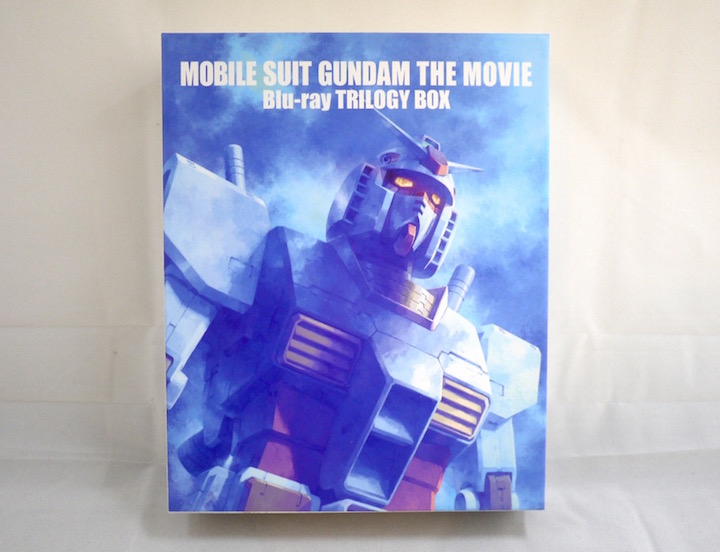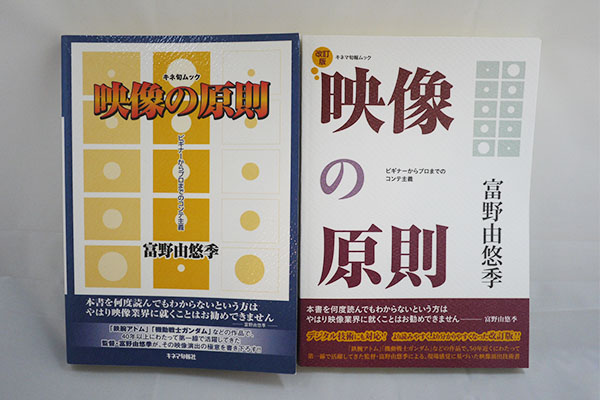アニメを観る目が変わる?一冊! 『映像の原則 改訂版』〜レジェンド本を学ぶ
映像以外にも応用できる「構図と心臓の位置の関係性」
本書に書かれている映像の原則の中から、もうひとつ「お作法」をご紹介します。それは「構図と心臓の位置の関係性」についてです。
映像の原則は当然映像に関する「お作法」なので、演劇やイラストの制作にそのまま適用するわけにはいきませんが、「構図と心臓の位置の関係」については、他の分野にも応用が利くものとなっています。
本書では画面の構図に関する理論を、以下のように説明しています。
映像の原則は当然映像に関する「お作法」なので、演劇やイラストの制作にそのまま適用するわけにはいきませんが、「構図と心臓の位置の関係」については、他の分野にも応用が利くものとなっています。
本書では画面の構図に関する理論を、以下のように説明しています。
はたして心臓の位置ひとつで、見るものの印象が変わったりするでしょうか。この部分だけ読むと、ちょっとオカルトめいている気もしますね。
「右より見えてくる視覚印象は、心臓より遠いために、プラス指向を喚起するというとオーバーなのですが、観客は寛容にその存在を認めることができるのです。(中略)”当たり前にくるもの””舞い降りるもの””大きなもの”という意味性を持たせるためには”上手から登場させればいい”ということになります。
そのぎゃくが下手で、”弱者”虐げられている者”は下手におきます」
(『映像の原則 改訂版』p.56より引用)
(『映像の原則 改訂版』p.56より引用)
こう言われると、なんとなく説得力があるような気がします。

ちなみに私は学生時代にこの原則を知り、「本当なのか?」と疑問に思い、富野監督の『機動戦士ガンダム』を見て確認したことがあります。すると、多くのシーンが本当にこの原則の通りに作られていました。
たとえば戦闘シーンは、ほとんどが
1. ガンダム登場、圧倒的な強さで右から左に敵を倒していく
2. シャアなど強敵が現れると右からガンダムを攻撃し、ガンダムを左に追い詰める
3. 最後はガンダムが大逆転して右側をとり、右または右上から左に向かって敵を倒す
という内容で展開していきます。
『ガンダム』を見たことのある人はピンとくると思いますが、ランバ・ラルのグフを撃破したときも、黒い三連星のジェットストリームアタックを破ったときも、ガンダムは右から左に向かって敵を倒しています。
この理論を、たとえばイラストに当てはめると、左向きのキャラ絵(キャラは絵の右側にいる)の方が、逆向きのキャラ絵より強そうに見えたり、絵として安定している感じがしたり、自然に見えたりするということが言えます。
右利きの人にとってそっちの方が描きやすいからといった別の理由も考えられますが、どちらかというと左向きの絵の方がしっくりくると感じる人が多いのではないでしょうか。
このように、映像だけでなくほかのさまざまな分野に応用できる原則があるので、映像以外のクリエイティブ分野の人たちにもすすめられる一冊です。
たとえば戦闘シーンは、ほとんどが
1. ガンダム登場、圧倒的な強さで右から左に敵を倒していく
2. シャアなど強敵が現れると右からガンダムを攻撃し、ガンダムを左に追い詰める
3. 最後はガンダムが大逆転して右側をとり、右または右上から左に向かって敵を倒す
という内容で展開していきます。
『ガンダム』を見たことのある人はピンとくると思いますが、ランバ・ラルのグフを撃破したときも、黒い三連星のジェットストリームアタックを破ったときも、ガンダムは右から左に向かって敵を倒しています。
この理論を、たとえばイラストに当てはめると、左向きのキャラ絵(キャラは絵の右側にいる)の方が、逆向きのキャラ絵より強そうに見えたり、絵として安定している感じがしたり、自然に見えたりするということが言えます。
右利きの人にとってそっちの方が描きやすいからといった別の理由も考えられますが、どちらかというと左向きの絵の方がしっくりくると感じる人が多いのではないでしょうか。
このように、映像だけでなくほかのさまざまな分野に応用できる原則があるので、映像以外のクリエイティブ分野の人たちにもすすめられる一冊です。
『映像の原則 改訂版』の入手方法と注意点

本書には「イマジナリィ・ライン」や「構図と心臓の位置の関係性」のほかにも、数多くの映像の原則が紹介されています。アニメやWeb動画など映像制作をしている人には、テキスト代わりに読み込んでみてはいかがでしょうか。
また、この本を読むことで、映像の「お作法」や演出が理解できるようになり、これまでよりもアニメや映画をディープに楽しむことができるようになるはず。作り手だけでなく「作品を楽しみたい!」と思う観る側の人も楽しめる一冊となっています。
本書は現在キネマ旬報社から刊行中。全国の書店で入手可能です。Amazonでも取り扱っています。なお、本書には改訂版になる前の『映像の原則』(2002)という本もありますが、こちらは改訂版に比べて約10年古く、デジタル分野についての言及が少ないので、今から読むのでしたら改訂版の方をおすすめいたします。
また、この本を読むことで、映像の「お作法」や演出が理解できるようになり、これまでよりもアニメや映画をディープに楽しむことができるようになるはず。作り手だけでなく「作品を楽しみたい!」と思う観る側の人も楽しめる一冊となっています。
本書は現在キネマ旬報社から刊行中。全国の書店で入手可能です。Amazonでも取り扱っています。なお、本書には改訂版になる前の『映像の原則』(2002)という本もありますが、こちらは改訂版に比べて約10年古く、デジタル分野についての言及が少ないので、今から読むのでしたら改訂版の方をおすすめいたします。
購入はこちら!(Amazonへ)
知れば知るほど作品が楽しくなる!
アニメに限らず、優れたクリエイターは、いろいろなことを意図して・狙って作品を作っていますが、クリエイター全員がその「狙い」を言葉にしてくれるわけではありません。多くの場合、その人の頭の中に「コツ」のようなものとして存在するだけで終わってしまいます。
一方、『映像の原則 改訂版』のように、優れたクリエイターが執筆した一部の本には、その狙いやコツがあますことなく記されています。これらを紐解くことによって、ものづくりの知見を学び、より高いレベルで作品を観たり作ったりすることができるようになるのではないでしょうか。
(c)2007,2008,2009谷川 流・いとうのいぢ/SOS団 (c)創通・サンライズ
一方、『映像の原則 改訂版』のように、優れたクリエイターが執筆した一部の本には、その狙いやコツがあますことなく記されています。これらを紐解くことによって、ものづくりの知見を学び、より高いレベルで作品を観たり作ったりすることができるようになるのではないでしょうか。
(c)2007,2008,2009谷川 流・いとうのいぢ/SOS団 (c)創通・サンライズ

(『映像の原則 改訂版』p.55より引用)